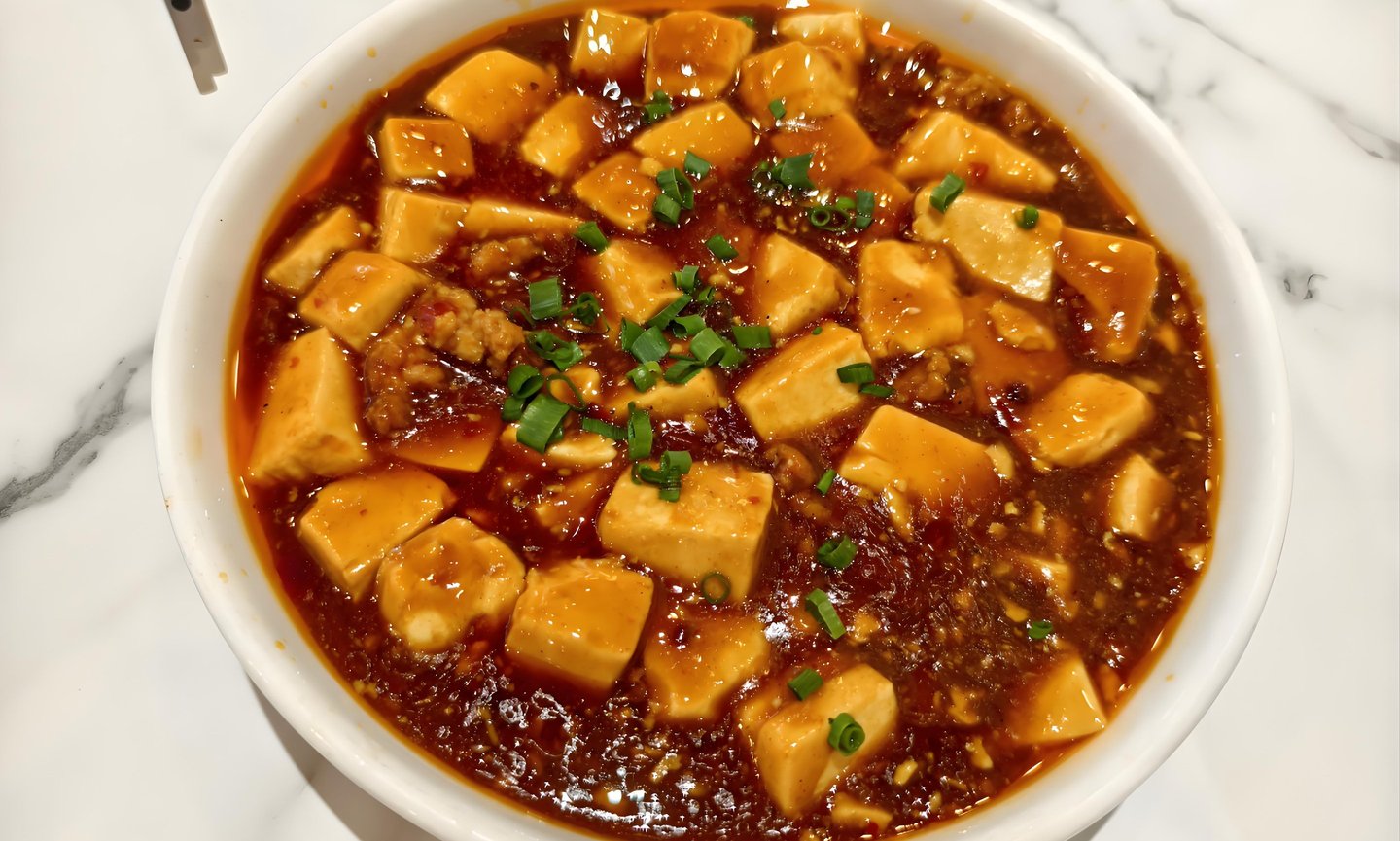Mapo Tofu Recipe: A Step-by-Step Guide
Delicious Mapo Tofu Recipe
RECIPES
8/29/20245 min read


Introduction to Mapo Tofu
Mapo Tofu is a renowned dish that has captivated the palates of many, originating from the Sichuan province of China. This culinary gem encapsulates the essence of Sichuan cuisine, which is characterized by its bold flavors and the prominent use of spicy ingredients. The dish itself is a harmonious blend of soft tofu, ground meat (commonly pork or beef), and a variety of seasonings that together create a flavor profile that is both spicy and numbing—a hallmark of Sichuan cooking.
The history of Mapo Tofu dates back to the late 1800s, when it was purportedly created by a couple who operated a small restaurant in Chengdu. The term "Mapo" translates to "pockmarked old woman," which pays homage to the wife's distinctive facial features, as well as to the textures that the dish embodies. Over the years, Mapo Tofu has evolved from a simple street food into a beloved dish served in esteemed restaurants worldwide, showcasing its versatility.
Traditional ingredients play a crucial role in achieving the authentic taste of Mapo Tofu. The dish typically features doubanjiang (fermented broad bean paste), which imparts a rich umami flavor and a deep red color. Alongside this, Sichuan peppercorns are essential, as they lend a unique numbing sensation that balances the heat. Other components often include garlic, scallions, and various spices, contributing to the complex layers of flavor this dish is celebrated for. What sets Mapo Tofu apart is not just its fiery kick but also the tender texture of the tofu, making each bite a delightfully satisfying experience.
Given its historical roots and the skillful combination of ingredients, it is no wonder that Mapo Tofu remains a staple in Chinese households and is continuously celebrated in international cuisine. The love for this dish extends beyond borders, drawing in both culinary enthusiasts and casual diners alike.
Ingredients Needed for Mapo Tofu
To prepare a delicious Mapo Tofu, it is vital to gather the right ingredients that elevate this iconic Sichuan dish. Below is a comprehensive list of the main components categorized into tofu, meat (optional), and spices, alongside their significance and potential substitutes.
Tofu
The cornerstone of Mapo Tofu is, of course, the tofu. Opt for firm or extra-firm tofu to provide the necessary texture that holds up during cooking. The quality of the tofu is essential; aim for organic varieties when possible. If you prefer a softer texture, you could substitute with soft tofu, although this will result in a different mouthfeel.
Meat (optional)
Traditionally, ground pork is used in Mapo Tofu to add depth and richness to the dish. However, you can substitute it with ground chicken or even minced beef if preferred. For a vegetarian alternative, consider using finely chopped mushrooms, which can mimic the umami flavor profile of meat.
Spices
Mapo Tofu is renowned for its bold and spicy flavor, achieved through a unique blend of spices. Key ingredients include doubanjiang (fermented broad bean paste), which provides heat and complexity; douchi (fermented black beans) for umami; and Sichuan peppercorns, known for their signature numbing effect. If these ingredients are difficult to find, chili paste or sauce can substitute for doubanjiang, while a combination of black pepper and garlic can stand in for Sichuan peppercorns, though the original flavor may vary.
In addition, you will need garlic, ginger, and scallions to enhance the aromatic profile of the dish. Stock or water will be necessary to create the sauce base, as well as cornstarch to thicken it. Considering the importance of these ingredients contributes to the overall harmony of flavors, selecting quality items can significantly enhance your Mapo Tofu experience.
Step-by-Step Cooking Instructions
Cooking Mapo Tofu, a classic Chinese dish, requires the following ingredients: soft or silken tofu, ground pork, Doubanjiang (broad bean paste), soy sauce, garlic, ginger, green onions, and Sichuan peppercorns. Start by gathering all necessary components to streamline your cooking process.
1. **Preparation of Ingredients:** Begin by draining the tofu and cutting it into cubes, roughly an inch in size. Rinse it under cold water and set it aside. Next, finely chop the garlic, ginger, and green onions, taking care to separate the white parts from the green. This will ensure even flavor distribution during cooking.
2. **Cooking the Pork:** In a large skillet or wok, heat a tablespoon of vegetable oil over medium-high heat. Add the ground pork, cooking it until it is browned and cooked through, approximately 5–7 minutes. Breaking the meat up with a wooden spoon will aid in even cooking.
3. **Adding Aromatics:** Once the pork is sautéed, reduce the heat to medium. Stir in the minced garlic, ginger, and the white parts of the green onions. Cook for an additional 1–2 minutes until fragrant, ensuring the garlic does not burn.
4. **Incorporating Seasonings:** Mix in the Doubanjiang and soy sauce. These ingredients contribute to the complex flavor profile that defines Mapo Tofu. Sauté for another minute to allow the flavors to meld, then add a splash of water to create a sauce.
5. **Tofu Integration:** Carefully add the cubed tofu to the pan, gently folding it into the sauce to avoid breaking the cubes. Ensure the tofu is coated with the mixture. Simmer for 5 minutes, allowing the flavors to permeate the tofu.
6. **Final Touches:** Finish with a teaspoon of Sichuan peppercorns for that signature numbing spice, and adjust seasoning as needed. Just before serving, stir in the green parts of the onions for a fresh garnish.
Once served, Mapo Tofu pairs well with steamed rice, making it a satisfying meal. Follow these steps closely, and you will achieve a flavorful dish with rich, spicy, and aromatic qualities!
Serving Suggestions and Variations
Mapo Tofu is a beautifully versatile dish that can be served in a variety of ways, allowing for personal customization depending on individual tastes and preferences. Traditional serving methods suggest that Mapo Tofu be placed atop a bed of steaming, fluffy rice. The rice not only balances the highly flavorful and spicy sauce but also serves to absorb the delicious umami flavors, creating a harmonious and satisfying meal. Garnishing the dish with freshly chopped scallions or cilantro can add color and contrast, enhancing both presentation and flavor.
For those seeking to explore variations of Mapo Tofu, there are several exciting options to consider. One popular adaptation includes a vegetarian version, which can be achieved by substituting minced meat with textured vegetable protein or finely diced mushrooms. This allows vegetarians and vegans to enjoy the rich flavors of Mapo Tofu without compromising their dietary preferences. Additionally, incorporating different types of tofu, such as silken or firm, can alter the dish's texture, giving it a distinct character.
Moreover, the spice level can be adjusted according to individual taste. For those who prefer milder flavors, reducing the amount of doubanjiang (fermented broad bean paste) and Sichuan peppercorns can create a more approachable dish. Conversely, spice enthusiasts can amplify the heat by adding extra chili oil or fresh chilies during cooking. These variations not only make the dish more accessible but also allow for experimentation in the kitchen.
In conclusion, whether enjoyed traditionally with rice or customized with various ingredients and spice levels, Mapo Tofu remains a delightful dish that can cater to various palates. By trying these serving suggestions and variations, one can truly enhance their Mapo Tofu experience and explore the many possibilities this dish has to offer.
Learn More
Contact Us
Sign up
Inquiry Email: info@eastrayspice.com
Whatsapp / Tel: +8618291998053 +1-559-537-6883 (US)
© 2025 Eastray Spice All rights reserved.
Advantages
Why Choose Eastray Spice
Support E-mail: support@eastrayspice.com
